Keeping a chainsaw sharp and well-maintained is essential for any chainsaw carver or user who wants to ensure they are able to make the most out of their tool. In this article, we will explore the process for maintaining and sharpening chainsaw blades to ensure that your chainsaw is always in top condition and ready for use. Maintaining and sharpening a chainsaw blade may seem daunting, but with the right tools and techniques, anyone can learn to do it themselves. We’ll walk you through the basics of how to maintain and sharpen a chainsaw blade, as well as provide some tips and tricks for getting the most out of your tool.
The first step in maintaining and sharpening chainsaw blades
is determining the type of blade that you have.There are two main types of chainsaw blades—standard blades and carbide-tipped blades. Standard blades are made of high-carbon steel and are relatively inexpensive but tend to wear out quickly. Carbide-tipped blades are made of a harder material such as tungsten or chromium and can last longer than standard blades. Once you have determined the type of blade, you need to select the appropriate sharpening tools for the job.
For standard blades, you will need a file that is slightly larger than the size of the chain link, and for carbide-tipped blades, you will need a diamond file. You may also need a file guide, which helps to ensure that the blade is sharpened evenly. Other supplies that may be necessary include a rag or cloth, oil, lubricant, and protective gloves.
Sharpening a chainsaw blade
is a fairly straightforward process. For standard blades, start by placing the file against the side of the cutter at a 30 degree angle and draw it along the length of the blade.Repeat this process on each side of the blade until it is sharpened. For carbide-tipped blades, start by placing the diamond file against one side of the cutter at a 15 degree angle and draw it along the length of the blade. Repeat this process on each side until it is sharpened. It is important to take safety precautions when sharpening a chainsaw blade. Make sure to wear protective gloves to protect your hands from injury.
Also, check to make sure that the chain is securely tightened before beginning the sharpening process. Finally, use caution when handling sharpened chainsaw blades as they can be dangerous if handled improperly. When finished sharpening your chainsaw blade, make sure to apply oil or lubricant to protect it from rust and corrosion. Also, check to make sure that all of the links in your chain are tight and secure before using your chainsaw again.
Safety Tips
When sharpening or maintaining a chainsaw blade, it is important to take safety precautions. Make sure to wear protective gloves when sharpening your chainsaw blade to protect your hands from the sharp edges of the blade.Additionally, be sure to check that all of the links in your chain are tight and secure before using your chainsaw again. Doing so ensures that your chainsaw is operating safely and efficiently.
Types of Chainsaw Blades
Chainsaw blades come in two main varieties: standard blades and carbide-tipped blades. The primary difference between the two is their material composition, cost, and durability. Standard blades are made from steel and are the more cost-effective of the two. They require frequent sharpening, as they are prone to dulling quickly.This type of blade is best for occasional use or for those on a budget. Carbide-tipped blades are made from a combination of steel and a hard material called carbide. They are more expensive than standard blades, but last longer and require less frequent sharpening. These blades are often used by professional chainsaw operators and those who frequently use their chainsaws.
Sharpening Tools
Chainsaw blades come in a variety of styles, and the type of blade will determine which tools are necessary for sharpening. Standard blades require a file that is slightly larger than the size of the chain link, while carbide-tipped blades require a diamond file.It is important to use the correct file size for the job, as using one that is too large or too small may damage the blade. Additionally, a guide bar and depth gauge should be used to keep the sharpening process accurate and consistent. When sharpening a standard blade, it is important to make sure that the file is held at the correct angle and that the teeth are sharpened evenly. It is also important to ensure that the depth gauge remains in its proper place after each filing session.
When sharpening a carbide-tipped blade, a diamond file should be used, as this type of blade is more durable than standard blades. The filing process for a carbide-tipped blade is similar to that of a standard blade, however, it is important to ensure that the diamond file remains in its proper place after each filing session. It is also important to remember safety precautions when sharpening chainsaw blades. Always wear safety goggles and gloves when handling sharp objects, and never attempt to sharpen a blade without first consulting an expert.
Additionally, it is important to ensure that the work area is clean and free from debris before beginning the sharpening process.
Aftercare
After sharpening your chainsaw blade, the next step is to apply oil or lubricant to protect it from rust and corrosion. This is a crucial step in maintaining and extending the life of your chainsaw blade. By regularly lubricating the blade after sharpening, you can ensure that it will last longer and perform better. When applying oil or lubricant, make sure to use a quality product.If using a spray-on lubricant, make sure to apply it liberally and evenly over the entire blade. If using an oil-based lubricant, use a rag or paper towel to wipe it on the blade. It is important to avoid leaving any pools of lubricant on the blade as this can attract dirt and debris. It is also important to regularly check your chainsaw blades for signs of wear or damage.
If you notice any nicks or dents in the blade, be sure to replace it as soon as possible as these can affect the performance of your chainsaw.
Sharpening Technique
Chainsaw blades need to be regularly maintained and sharpened to keep them operating at their best. There are different techniques for sharpening standard and carbide-tipped chainsaw blades, and it is important to know the difference between the two types of blades. For standard blades, the sharpening process involves using a round file that is inserted into the blade's depth gauge. Start by placing the file against the side of the cutter at a 30 degree angle and draw it along the length of the blade.This should be done several times until the blade has been sharpened. For carbide-tipped blades, the sharpening process involves using a diamond file. Start by placing the diamond file against one side of the cutter at a 15 degree angle and draw it along the length of the blade. Make sure to follow the manufacturer's instructions when sharpening a carbide-tipped blade, as this type of blade is more delicate and must be handled carefully.
When sharpening any type of chainsaw blade, it is important to use the correct tools and supplies and follow safety guidelines. In addition, regular maintenance and sharpening will help ensure that your chainsaw blades remain in optimal condition and continue to perform well. Maintaining and sharpening chainsaw blades is an essential part of preserving the performance of your chainsaw. Selecting the appropriate tools and technique, as well as following safety protocols, is essential for ensuring that your chainsaw blade is sharpened correctly and safely. Taking the time to properly maintain and sharpen your chainsaw blades will result in improved performance and a longer lifespan for your chainsaw.
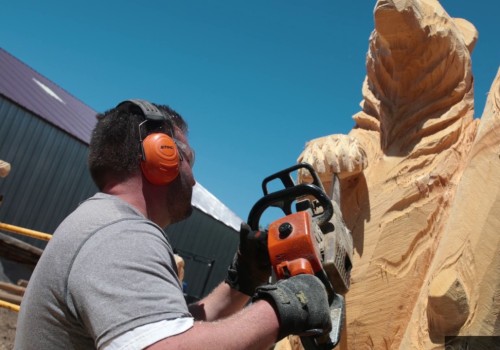

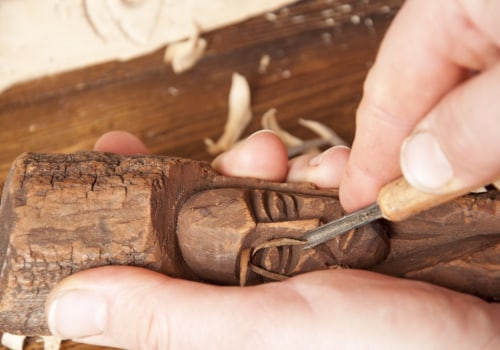
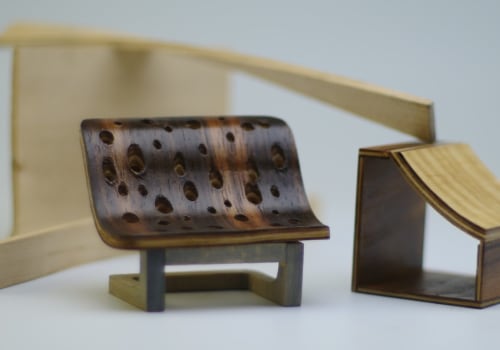
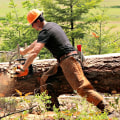

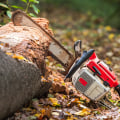
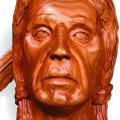

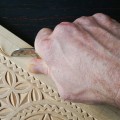
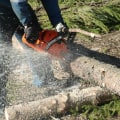
Leave a Comment